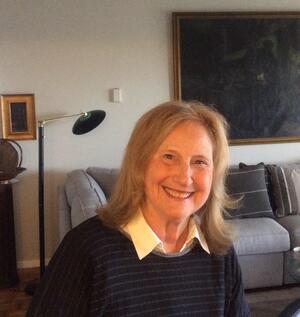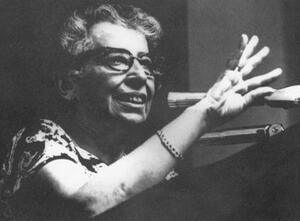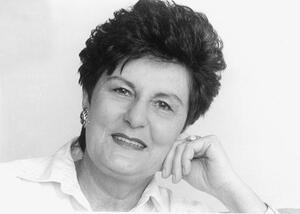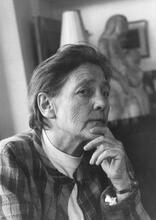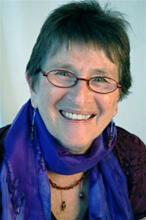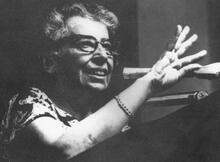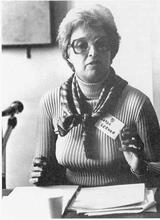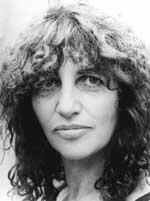Sociology in the United States
Jews have made a disproportionate contribution to the field of sociology, despite discrimination and exclusion. Because sociologists are not identified by religion within the American Sociological Association, it is difficult to know which American women sociologists are Jewish. To find these sociologists, some look to women who study the American Jewish community. Additionally, locating Jews for research purposes by identifying Jewish-sounding names is an accepted practice among sociologists. Before the current wave of feminism, Jewish women sociologists were either trained but marginalized, married to famed sociologists, or developed strong careers on their own. After the reemergence of the women’s movement, more opportunities opened regardless of marital status.
Jews in Sociology
Sociological theory suggests that Jews are likely to be good sociologists, because people positioned on the margins of society (i.e., social outsiders) tend to be astute social observers (Park 1950). Since Jews historically have been the quintessential outsiders, many great sociologists have, in fact, been Jews—particularly Jewish men (e.g., Lewis Coser, Emile Durkheim, Erving Goffman, Irving Louis Horowitz, Herbert Marcuse, Karl Marx, Karl Mannheim, Robert K. Merton, and Georg Simmel), although some did not acknowledge their Jewishness.
The disproportionate contribution by Jews to sociology is clear both in European and American sociology (Fine 1995). Despite this record of Jewish contribution, many analyses of the history of sociology stress the Protestant tradition. Also forgotten is the fact that in order to contribute intellectually, one has to have the opportunity to do so. Until recently, faculty positions were perhaps difficult to attain for Jewish men, but they were systematically denied to women, particularly Jewish women, except in marginal academic milieux such as women’s colleges.
Theoretically, being a Jew and a woman could constitute “double marginality” (i.e., being doubly positive, leading to particularly profound sociological sensitivity) or paralysis, where the value of belonging to one marginal group is canceled out by belonging to two. In my view, “double marginality” is an asset, because American Jewish women have, indeed, made considerable contributions to the discipline of sociology and to its various subfields (see Reinharz 1993).
When doing historical research on American Jewish women sociologists, it is difficult to determine who is a sociologist. If we use the criteria of a Ph.D. in sociology and faculty appointment in a department of sociology, then many women will be eliminated from the potential group of early sociologists. Although scores of women worked in Settlement Houses in Chicago, Pittsburgh, New York, and other cities and conducted superb sociological research, they are overlooked in histories of sociology or mislabeled as social workers (Fitzpatrick 1990). Many organizations that spun off from settlement houses—juvenile courts, probation offices, social service agencies—were begun by Jewish women such as Chicagoan Minnie Low, whose work straddled the fields of social work and social research. Higher education for women was nearly inaccessible until the turn of the century, and appointment to faculty positions took longer still. Many academic institutions other than women’s colleges were altogether closed to women and had quotas for Jews.
Only since 1985 has research been done on women’s sociological achievements, let alone on Jewish women’s sociological work. One of the earliest books to provide systematic information about women sociologists was published as late as 1991 and labeled by the editor as “the first extensive reference book on great female sociologists.” The volume was sixteen years in preparation because the information on early women sociologists was so difficult to locate, and because the academy has “structural barriers to [such] an enterprise. … Rewards for writing and teaching about women intellectuals are still problematic” (Deegan 1991, pp. xiii–xv). Deegan claims that American women functioned as sociologists from 1840 on, even though most nonfeminist historians of sociology believe that women did not enter the profession until after 1930. Thus, the majority of sociologists may not recognize the fact that women sociologists, let alone Jewish women sociologists, existed before the current wave of feminism opened the academy to women in a significant way. As sociologist Helen MacGill Hughes documented (1975) and, later, historian of sociology Mary Jo Deegan, wrote, “White, Anglo-Saxon, Protestant women from the middle and upper middle classes predominate in the marginal world of women sociologists” (1991, p. 11). Only now are people beginning to acknowledge the history of Jewish women sociologists.
Locating Jewish Women Sociologists
The unusual achievements of Jewish women in sociology are recognized only anecdotally. The fact that sociologists are not identified by religion within the American Sociological Association makes it difficult to know empirically which American women sociologists are Jewish and which are not. The influential report on “The Status of Women in Sociology, 1968–1972,” commissioned and published by the American Sociological Association in 1973, does not discuss religion at all. Therefore, it is impossible to assess the percentage of current or past sociologists who were American Jewish women, or the percentage of American Jewish sociologists who were women. Whereas books have been written about black sociologists, the Protestant roots of sociology, and women sociologists, there is no analysis by religion of the work of American sociologists, and no work on Jewish American women sociologists as a group. This encyclopedia entry, written more than 150 years after the coining of the term “sociology,” is probably the first discussion of the topic.
One factor explaining Jewish women’s likely overrepresentation in sociology relative to non-Jews is the value Jews place on education and the scholarly life. Using data from 526 respondents to the 1990 National Jewish Population Survey who were between the ages of 21 and 64 and employed, Rela Geffen found that Jewish women are the most highly educated women in the United States, and their receipt of advanced degrees continues to increase (cited in Sales, Shavelson, and Lasken 1994).
The few anthologies that discuss female sociologists do contain quite a few chapters by Jewish women, but several of these entries (e.g., Kanter 1988) do not mention the author’s Jewishness. Some anthologies include a chapter in which an American Jewish female reflects on her work but does not necessarily even mention that she is Jewish (e.g., Daniels 1967). Others include a brief reference to the author’s being Jewish, but do not connect this fact to the author’s sociological work (e.g., Cavan 1994, Hess 1995, Rubin 1994). Only a few highlight the significant way in which being Jewish shaped the person’s life and work (Keller 1995, Reinharz 1995, Tuchman 1995, Wartenberg 1995). Thus, it is ironic that Jews are supposed to be unusually socially aware, yet they do not always recognize the way their Jewishness affects their sociological work.
Because sociologists frequently study subject matter close to their personal concerns or identity, an alternative way to locate American Jewish women sociologists is to locate women who study the American Jewish community. The study of the American Jewish community, however, is so recent that very few individuals are involved (e.g., Tobin Belzer, Lynn Davidman, Debra Renee Kaufman, Rela Geffen Monson, Shelly Tenenbaum, and others). Some women may also be doing sociological research about the Jewish community but were actually trained as psychologists (e.g., Bethamie Horowitz, Amy Sales), literary critics (e.g., Sylvia Barack Fishman), or historians (e.g., Joyce Antler). Therefore, the first challenge in understanding the contribution and experience of American Jewish women sociologists is to identify these women.
Jewish feminist sociologists’ interest in ethnicity and multiculturalism ironically does not always include an interest in the lives or oppression of Jews. Eminent sociologist Mirra Komarovsky (1905–1999), the second woman president of the American Sociological Association, mentioned briefly that when she graduated from Barnard, her professors warned her that she would face difficulties pursuing an academic career in sociology, as a woman, a Jew, and someone who was foreign-born, a topic about which she did not write or speak. Her vast corpus of work includes pioneering studies of women, masculinity, cultural contradictions, and self-disclosure, but does not deal with any Jewish issues or Jewish communities. The typical triad of contemporary sociological concerns—race, class, and gender—does not usually address religion or ethnicity. An early exception is Pauline Bart, the only sociologist who contributed an essay (“How a Nice Jewish Girl Like Me Could”) to Evelyn Torton Beck’s Nice Jewish Girls: A Lesbian Anthology (1982). Moreover, realizing that being women put them in a tenuous position, some Jewish women sociologists may have hidden their Jewish identity to fit in somewhat better. Thus, it is possible that Ruth Shonle Cavan (b. 1896) may have some Jewish roots, given her name and the fact that she wrote about intermarriage, including an article entitled “Jewish Student Attitudes Toward Interreligious and Intra-Jewish Marriage,” American Journal of Sociology 76 (May 1971): 1064–1071. In an interview, however, Cavan identified herself as Protestant.
The presence of many Jewish women among current sociologists is likely to be noted, if at all, not because these women study Jewish themes but because of their Jewish-sounding names (e.g., Muriel Cantor, Nancy Chodorow, Janet Saltzman Chafetz, Roberta S. Cohen, Arlene Kaplan Daniels, Eva Etzioni, Zelda Gamson, Nona Glazer, Rosanna Hertz, Beth Hess, Ruth Jacobs, Charlotte Schwartz, and Lenore Weitzman). In fact, locating Jews for research purposes by identifying Jewish-sounding names is an accepted practice among sociologists.
Fay B. Karpf
One of the earliest Jewish American women sociologists is Austrian-born Fay B. Karpf (1893–1981), who received her Ph.D. at age thirty-two in 1925 from the University of Chicago, the then preeminent department and home of the distinctive “Chicago school of sociology” (Reinharz 1994). Her German-speaking Orthodox parents sent her to public schools and gave her a profound respect for the spiritual and intellectual life. In late-life interviews, she remembered having her Jewish heritage appreciated as a graduate student, both because several senior male scholars were studying Jewish and other ethnic urban enclaves, and because the presence of many foreign students reduced the ethnocentrism found in other universities. She also claimed, however, that her pioneering work in community studies and “ecological maps” was attributed to men who went on to regular academic careers, unavailable to her.
While a graduate student, Karpf conducted social welfare research at the Chicago Jewish Charities (1922–1923). Her first major work, American Social Psychology: Its Origins, Development and European Background (1932), became the standard textbook in social psychology until the early 1960s. Thus, it should be acknowledged that American sociologists from 1932 through the early 1960s learned social psychology through Fay Karpf’s work. She later became the first chair of the Division of Social Psychology of the American Sociological Association.
After earning her Ph.D., Karpf went to Paris to study with psychoanalyst Otto Rank, and then moved to New York to teach social work at the Training School for Jewish Social Work, not a university department of sociology. She never had an opportunity to train Ph.D. sociologists who might have sustained her legacy. Inevitably, she has become invisible in the history of the discipline. Like many women, Karpf moved because of an opportunity offered her husband—to direct the newly created Training School for Jewish Social Work, a response to the Jewish community’s need for professionally educated social workers to perform Jewish social service. One of the school’s goals was to encourage its students to become leaders in the Jewish community and to end the high turnover rate of Jewish social workers. In 1932, the Training School’s name was changed to the Graduate School for Jewish Social Work and its curriculum revised to provide knowledge and appreciation of Jewish culture as well as understanding of the general, non-Jewish society.
The Graduate School for Jewish Social Work highlighted differences between the Jewish and non-Jewish communities and emphasized the changing needs of the Jewish community. Fay Karpf’s training as a sociologist and position as wife of the director influenced the values and mission of the school. By the early 1930s, she rose to the rank of professor, and by the end of the decade, she chaired a department, teaching courses on the development and theory of social investigation, primarily research courses. Her teaching career ended when the school closed in 1940, a mere fifteen years after she earned the Ph.D.
All of Karpf’s writing after her first volume concerns the different schools of psychotherapy, culminating in a book published by the Philosophical Library in New York, The Psychology and Psychotherapy of Otto Rank (1953). As a sociologist, she rejected Freudian reliance on instincts in favor of Rank’s more sociological views. Later, however, she became disillusioned with Rank for his denying his Jewishness and blaming Jews for the faults of German culture. Rank condemned repressed Jews and gentiles for creating the conditions of general malaise and saw antisemitism as a positive force in Jewish cultural development (Klein 1981).
With the demise of the school, Maurice and Fay Karpf moved to Los Angeles where he was appointed executive director of the Federation of Jewish Welfare Organizations of Los Angeles and executive secretary of the Los Angeles Jewish Community Council. She, on the other hand, switched fields from sociology and social work to counseling and psychotherapy, which she practiced in Los Angeles for the last forty years of her life. In 1973, thirty-three years after she left New York, she listed herself in the University of Chicago alumni directory as a clinical psychologist.
Hannah Arendt
Beyond the difficulty of identifying “who is Jewish” are the problems of defining “who is American” and “who is a sociologist.” A case in point is Hannah Arendt (1906–1975), a woman born in Hanover, Germany, who endured internment during the Holocaust and arrived in New York in May 1941, becoming a citizen only in 1951. Because she lived in the United States for her remaining thirty-four years, she could be considered an American Jewish scholar. Was she, however, a sociologist or a political scientist? Deegan’s 1991 reference work on women sociologists contains a chapter on Arendt, yet she is known as a political theorist. Arendt did not have an academic appointment, yet a major sociologist, Irving Louis Horowitz, is the Hannah Arendt Distinguished Professor of Sociology and Political Science at Rutgers University.
Hannah Arendt had a strong identity as a Jew, shaped both by her secular Jewish upbringing and her experiences during the Holocaust. Although she admired the idea of the State of Israel as a refuge for Jews, she was concerned that Jewish nationalism would prove no different from any other form of nationalism, an inherently dangerous phenomenon. Being a Jew in non-Jewish society was, however, not a viable alternative. Her first and last books, Origins of Totalitarianism (1951) and The Jew as Pariah: Jewish Identity and Politics in the Modern Age (1978), deal squarely with this dilemma. One of her earliest books, Rahel Varnhagen: The Life of a Jewish Woman (1958), concerns the oldest daughter of a prosperous Berlin merchant, raised in Orthodox surroundings, who always suffered from a sense of social inferiority because of her Jewish origin. After marrying into aristocracy, Varnhagen converted to Protestantism, and then came to admire her Jewish heritage, which formerly she had despised.
The Women’s Movement
Many of the Jewish women who were able to enter the profession and be recognized as sociologists were married to sociologists (e.g., Rose Coser and her husband Lewis, Jessie and L. L. Bernard, Caroline and Arnold Rose), as was true of their gentile sisters (e.g., Helen and Everett Hughes, Elizabeth and Alfred McClung Lee, Helen and Robert Lynd, Alva and Gunnar Myrdal) (for biographical descriptions on each of these women, see Deegan 1991). Wives of eminent sociologists became part of the networks of male sociologists and thus gained some access to information and professional opportunities. At the same time, however, they remained in the shadow of their famous husbands and were relegated to minor positions, or barred from them altogether because of nepotism rules (see Hughes 1975).
With the renewal of the American women’s movement in the mid-1960s and increased governmental funding for higher education, women, including large numbers of Jewish women, began to seek advanced degrees in greater numbers. Many of these individuals focused their dissertation research on problems relating to women’s lives (e.g., Cynthia Fuchs Epstein’s “Women and Professional Careers: The Case of the Woman Lawyer,” Columbia University, 1968). The basic concepts concerning sex role socialization (Weitzman 1979), the caste system of the sexes, the “feminine mystique,” comparable worth, the unequal distribution of labor in the household, and others were developed by American Jewish women sociologists. Most of the research these Jewish women sociologists undertook concerned inequality and injustice in some form. Most Jewish American female sociologists were feminists and contributed to a large body of literature in feminist sociology. Much of this work was also the underpinning of women’s studies courses and programs.
Until the 1970s, tenure was largely unattainable even in those rare circumstances when Jewish women had tenure-track faculty appointments. Those women who did earn a tenured position were largely in women’s colleges rather than at major research universities (e.g., Mirra Komarovsky at Barnard College rather than Columbia University). Women were kept primarily on the outside of academia or in marginal positions within. After the 1970s and the establishment of Sociologists for Women in Society (SWS), a professional group of feminist sociologists, the position of female sociologists improved enormously. Among the leaders of feminist sociology are American Jewish women such as Judith Lorber, founding editor of SWS’s academic journal, Gender & Society. The journal has not yet published much about Jewish life. Currently, the Sex and Gender Section of the American Sociological Association, a section to which many women sociologists belong because of their research interests, is the largest in the association. There is even some “fear” among conservative thinkers that sociology is becoming a “feminized” discipline and profession.
One other factor complicates the attempt to identify American Jewish women sociologists and their contributions—some of these women moved to Israel. These women include Deborah Bernstein, Brenda Danet, Dafna Izraeli (originally Canadian), Beverly Mizrachi, Judith Shuval, and several others. Deborah Bernstein, at the University of Haifa, conducted pioneering studies of women’s political roles in the pre-State period (1987, 1982), Beverly Mizrachi has studied women of achievement. Judith Shuval has focused on immigration, the health care system, and Russian physicians, winning the prestigious Israel Prize for her first book (1963). Brenda Danet has focused on Israeli bureaucracy (1989).
In sum, there were three types of American Jewish women sociologists in the period before the current wave of feminism: (1) women who were trained as sociologists but whose work was marginalized (e.g., Fay Karpf); (2) women who were married to famous sociologists and developed a career of their own (e.g., Jessie Bernard); and (3) women who were not married to sociologists and developed a strong career in sociology (e.g., Mirra Komarovsky). Few of these women mentioned their Jewishness in print, and almost none studied any aspect of Jewish life. Many, however, focused on women’s concerns.
After the reemergence of the women’s movement, the creative potential of Jewish women sociologists was unleashed, and Jewish women social researchers harnessed all the available research methods to conduct studies that could reshape American society. Their careers could unfold regardless of their marital status, even if they faced discrimination as women. When positions in academia became available, American Jewish women sociologists eagerly sought them and went on to form feminist sociological professional associations. Although their research output has been formidable and influential, it is still the case that very little of it has been devoted to studying Jewish life, and very little autobiographical writing by these women has discussed their lives as Jews. Nor has the generation of new sociologists that the older generation trained turned its sociological imagination toward issues of the American Jewish community.
Beck, Evelyn Torton. Nice Jewish Girls: A Lesbian Anthology (1982).
Bernstein, Deborah. The Struggle for Equality: Urban Women Workers in Prestate Israeli Society (1987).
Bernstein, Deborah S., ed. Pioneers and Homemakers: Jewish Women in Prestate Israel (1992).
Cavan, Sherri. “Being an Ethnographer.” In Gender and the Academic Experience: Berkeley Women Sociologists, edited by Kathryn Orlans and Ruth Wallace (1994).
Danet, Brenda. Pulling Strings: Biculturalism in Israeli Bureaucracy (1989).
Daniels, Arlene Kaplan. “The Low-Caste Stranger in Social Research.” In Ethics, Politics, and Social Research, edited by Gideon Sjoberg (1967).
Davidman, Lynn. Tradition in a Rootless World: Women Turn to Orthodox Judaism (1991).
Deegan, Mary Jo, ed. Women in Sociology: A Bio-Biographical Sourcebook (1991).
Fine, Gary Alan, ed. A Second Chicago School? The Development of a Postwar American Sociology (1995).
Fitzpatrick, Ellen. Endless Crusade: Women Social Scientists and Progressive Reform (1990).
Hess, Beth. “An Accidental Sociologist.” In Individual Voices, Collective Visions: Fifty Years of Women in Sociology, edited by Ann Goetting and Sarah Fenstermaker (1995).
Hughes, Helen MacGill. “Women in Academic Sociology, 1925–1975.” Sociological Focus 8, no. 3 (1975): 215–222.
Kanter, Rosabeth Moss. “Phases of Societal and Sociological Inquiry in an Age of Discontinuity.” In Sociological Lives, edited by Matilda White Riley (1988).
Karpf, Fay B. American Social Psychology: Its Origins, Development and European Background (1932).
Kaufman, Debra Renee. Rachel’s Daughters: Newly Orthodox Jewish Women (1991).
Keller, Suzanne. “Bridging Worlds: A Sociologist’s Memoir.” In Individual Voices, Collective Visions: Fifty Years of Women in Sociology, edited by Ann Goetting and Sarah Fenstermaker (1995).
Klein, Dennis B. Jewish Origins of the Psychoanalytic Movement (1981).
Park, Robert Ezra. Race and Culture (1950).
Reinharz, Shulamit. A Contextualized Chronology of Women’s Sociological Work (February 1993), and “Fay Karpf: Synthesizer Par Excellence.” Paper presented at the annual meetings of the American Sociological Association, Los Angeles, Calif. (August 1994), and “Finding a Sociological Voice: The Work of Mirra Komarovsky.” Sociological Inquiry 59, no. 4 (1989): 374–395, and “Marginality, Motherhood and Method: Paths to a Social Science Career and Community.” In Individual Voices, Collective Visions: Fifty Years of Women in Sociology, edited by Ann Goetting and Sarah Fenstermaker (1995).
Rubin, Lillian B. “An Unanticipated Life.” In Gender and the Academic Experience: Berkeley Women Sociologists, edited by Kathryn Orlans and Ruth Wallace (1994).
Sales, Amy L., Susanne Shavelson, and Diane Lasken, eds. Data Book: A Summary of Current Research and Writing on American Jewish Women (1994, draft).
Shuval, Judith. Immigrants on the Threshold (1963)
Tuchman, Gaye. “Lit. (Aramaic) "holy." Doxology, mostly in Aramaic, recited at the close of sections of the prayer service. The mourner's Kaddish is recited at prescribed times by one who has lost an immediate family member. The prayer traditionally requires the presence of ten adult males.Kaddish and Renewal.” In Individual Voices, Collective Visions: Fifty Years of Women in Sociology, edited by Ann Goetting and Sarah Fenstermaker (1995).
Wartenberg, Hannah Schiller. “Obstacles and Opportunities en Route to a Career in Sociology.” In Individual Voices, Collective Visions: Fifty Years of Women in Sociology, edited by Ann Goetting and Sarah Fenstermaker (1995).
Weitzman, Lenore J. Sex Role Socialization (1979).

